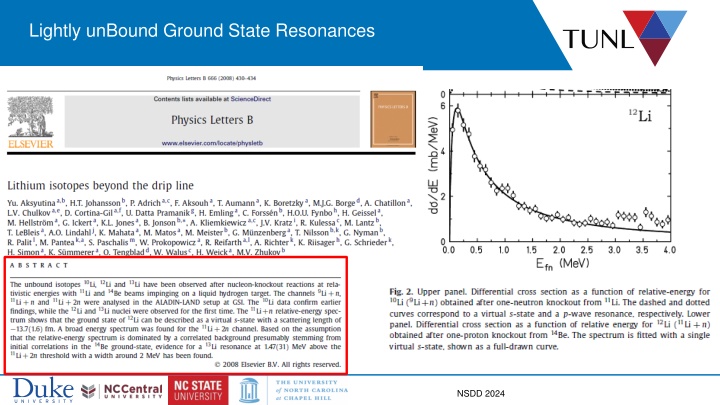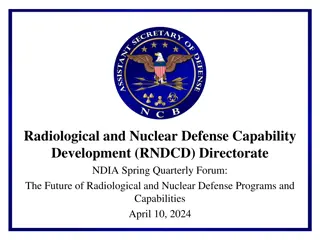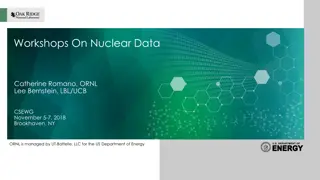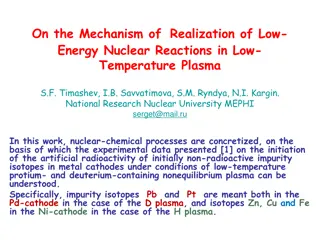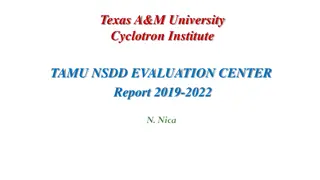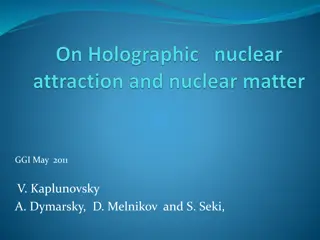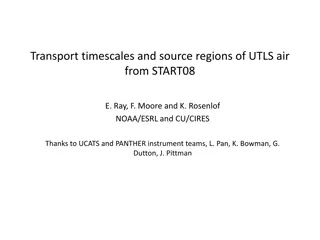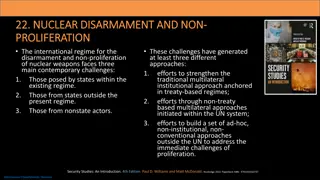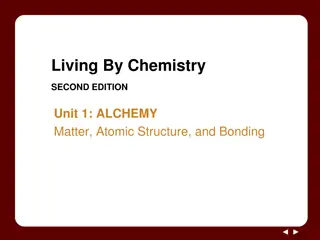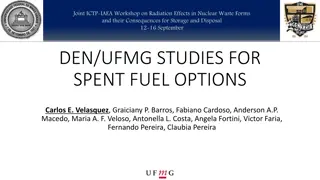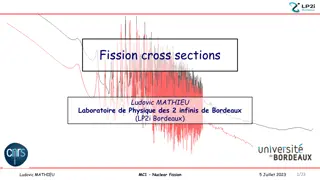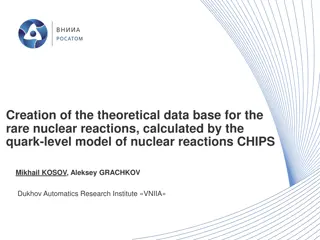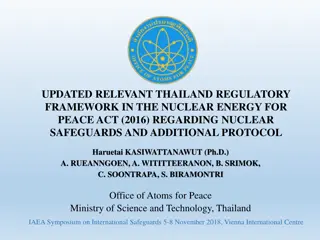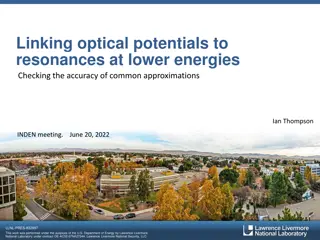Nuclear Resonances and Timescales
Exploring the relevance of lightly bound and unbound ground state resonances in NSDD 2024, along with discussions on controversies, articles, and nuclear timescales defining the existence of a nucleus. The content delves into definitions, limitations, and considerations regarding radioactive elements and nuclear motion.
Download Presentation

Please find below an Image/Link to download the presentation.
The content on the website is provided AS IS for your information and personal use only. It may not be sold, licensed, or shared on other websites without obtaining consent from the author.If you encounter any issues during the download, it is possible that the publisher has removed the file from their server.
You are allowed to download the files provided on this website for personal or commercial use, subject to the condition that they are used lawfully. All files are the property of their respective owners.
The content on the website is provided AS IS for your information and personal use only. It may not be sold, licensed, or shared on other websites without obtaining consent from the author.
E N D
Presentation Transcript
Lightly unBound Ground State Resonances NSDD 2024
Lightly Bound Ground State Resonances Why is this relevant 2 NSDD 2024
A controversy 3 NSDD 2024
A few relevant articles Ground State and other resonances These articles elevate important questions about resonance definitions. 4 NSDD 2024
Nuclear timescales A potential definition for the existence of a nucleus could be set by the definition of radioactivity. Goldanskii stated that 10 12 s corresponds to an approximate limit for radioactivity as such [22]. This statement was supported later by Cerny and Hardy [23]: . . . Lifetimes longer than 10 12s, a possible lower limit for the process to be called radioactivity . This definition would be more restrictive than the definition of an element and thus is inappropriate. The International Union of Pure and Applied Chemistry (IUPAC) has published guidelines for the discovery of a chemical element [24]. In addition to other criteria, they state that the discovery of a chemical element is the experimental demonstration, beyond reasonable doubt, of the existence of a nuclide with an atomic number Z not identified before, existing for at least 10 14 s . The justification for this limit is also given: This lifetime is chosen as a reasonable estimate of the time it takes a nucleus to acquire its outer electrons. It is not considered self-evident that talking about an element makes sense if no outer electrons, bearers of the chemical properties, are present . Similarly, the definition of a nucleus should be related to the typical timescales of nuclear motion. Nuclear rotation and vibration times are of the order of 10 22 s which can be considered a characteristic nuclear timescale [22]. The above-mentioned definitions of the driplines by Mueller and Sherrill [10] and the Chart of Nuclei [19] can be used as the definition of the existence of a nucleus. If a nucleus lives long compared to 10 22s it should be considered a nucleus. Unfortunately, this is no sharp clear limit. The most recent editions of the chart of nuclei include unbound nuclei with lifetimes that are of the order of 10 22 s [19, 25]. 5 NSDD 2024
Neutron Dripline and Virtual States 4.2. Virtual states The observation of unbound resonances along the neutron drip line in the sd shell is complicated because neutrons in unbound s orbitals neither have a Coulomb barrier nor an angular momentum barrier, thus they do not exhibit the classical Breit Wigner resonance shape. The decay-energy spectra of these virtual states can be expressed in terms of the scattering length of the inverse process of a neutron scattering off the daughter nucleus. The spectral shape of the decay-energy spectrum depends on the binding energy of the initial state. Nevertheless, the scattering length a is sometimes expressed in terms of a resonance energy E according to the relationship E ~h2/2 a2, using the reduced mass , as shown in figure 17(b) [66, 70], where the decay energy is plotted on a logarithmic scale as a function of the scattering length. The strong inverse dependence of the resonance energy on the scattering length results in large energies for small absolute values of the scattering length. The scattering lengths of unbound states are negative, and the use of the terms small and large scattering length can be confusing. It order to avoid misunderstanding; it should be made clear if the negative or the absolute scattering length is discussed. Toward small absolute values of the scattering lengths, even small uncertainties translate into large uncertainties in the resonance energies. In the figure the gray-shaded area corresponds to an uncertainty of 1 fm. Figure 17. (a) The initial state dependence of the decay-energy spectrum. The solid line corresponds a virtual state with a scattering length of 5 fm from a nucleus where the neutron was initially only bound by 280 keV. In contrast, the dashed line results if the initial state was bound by 8 MeV. The figure was adapted from [66]. (b) Calculated resonance energy E as a function of scattering length for s-states. The gray-shaded area corresponds to an uncertainty of 1 fm for the scattering length. Any distribution with a scattering length above about 5 fm probably should not be considered for the identification of a state of the final system. 6 NSDD 2024
Examples (2004) Reaching the limits of nuclear stability, Thoennessen 2004 According to the {adopted} definition, the first exotic dripline nucleus observed was 8He [186]. With a neutron to proton ratio of 3, 8He can also be considered the most neutron-rich bound nucleus. The location of the dripline was then established for the isotones 4 < N < 8 with the non-observation of 5H [27], 7He [52], 7H [187], 10Li and 10He [52]. With the dripline so close to the valley of stability, spectroscopic measurements were also performed for these nuclei. From the width of the measured resonances lifetimes of >1.3 zs (5H, [188]), 4.4 zs (7He, [189]), 0.022 zs (7H, [83, 126]), >2.9 zs (10Li, [190]) and 3.9 zs (10He [84]) were extracted (1 zs = 10 21 s). With the exception of 7H these nuclei have lifetimes which are long compared to the nuclear timescale ( 10 22 s) and should be considered nuclei. The resonance parameters for 5H are still controversial [191, 192]. The lifetime for 7H of 2.2 10 23 s was extracted from an estimated peak width of 20MeV [126] and was not quoted in the original paper [83]. Within the present definition of a nucleus 7H certainly does not qualify. Spectroscopic measurements were even performed on 6H [75, 193] and 9He [74, 194]. In addition to 4H [192] these are presently the only measured nuclei within an isotone chain which are removed from the dripline by two nucleons. 7 NSDD 2024
Extreme Result 9N (2 neutrons plus 7 protons) 8 NSDD 2024
Identified the decay mode reaching stability 9 NSDD 2024
Charity begins describing a framework to characterize resonances In this regime, the decay properties manifest themselves as scattering features rather than well- defined resonances. The maximum decay width at the boundary for A 8, based on single-particle timescales, is of order 3.5 MeV [10]. The 4p emitter 8C has one half of its nucleons in the continuum and the remainder constitutes an cluster. The nucleus 9N is even more extreme with an additional proton in the continuum. In nuclei such as 8C and 9N, we might anticipate difficulty in classifying nuclear properties in terms of localized nuclear states. On the other hand, new insights can be gained from such unbound clusters of nucleons. In this Letter, we make a careful distinction between resonances (sharp peaks in the experimental scattering cross section) and resonant states (complex-momentum poles of the scattering matrix). For the theoretical classification of resonant states, see Fig. 1. The decaying resonant states in the fourth quadrant of the complex-k plane, lying close to the real k axis and having a real energy Re(E)> 0 and a width = 2Im(E) > 0, can be interpreted as narrow resonances seen in experiments. The poles with Re(E) < 0 and > 0 can be associated with subthreshold resonant states ( > 45 ). The antibound states have Re(E)< 0 and > 0. Unlike the g.s. of 8C, the dineutron is not a genuine resonance (energy E > 0, decay width > 0), but an antibound state (or a scattering feature) [11,12] located on the second Riemann energy sheet. Here the attractive interaction between the two neutrons is just insufficient to produce a bound state, but its nearly bound nature is manifested by enhanced n + n scattering just above threshold and by strong final-state effects. The diproton is a subthreshold resonant state (E < 0; > 0) [13,14] and located below the 45 line in the complex-k plane (see Fig. 1). It is formally neither an antibound state nor a resonance (though closer to the latter), and again manifests itself by enhanced scattering strength and final-state effects. While there have been some recent suggestions of a tetraneutron resonance-like structure, what was observed [15,16] may instead be a final-state effect [17,18]. Similar situations might occur in the g.s. of 9N and 9He as presented in this Letter. 10 NSDD 2024
12Li is still problematic The issue there is associated with two different analyses - GSI reports only one component with as=-13 fm - MSU reports this component with as> -4 fm Depending on interpretation of this component, the GSI result may or may not be considered a state In any case, we should have a policy for what is considered a state 11 NSDD 2024
